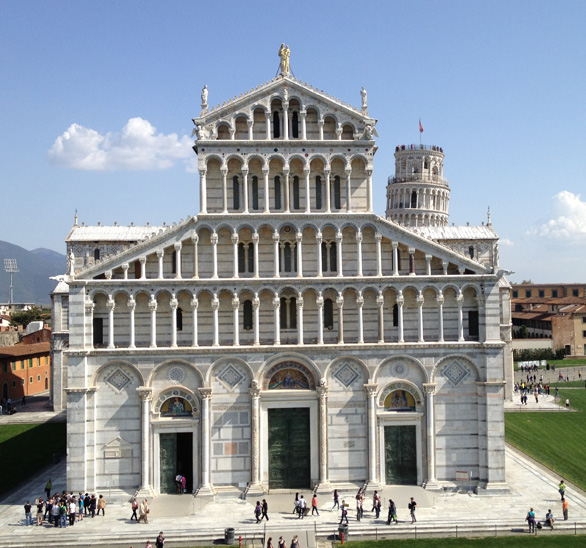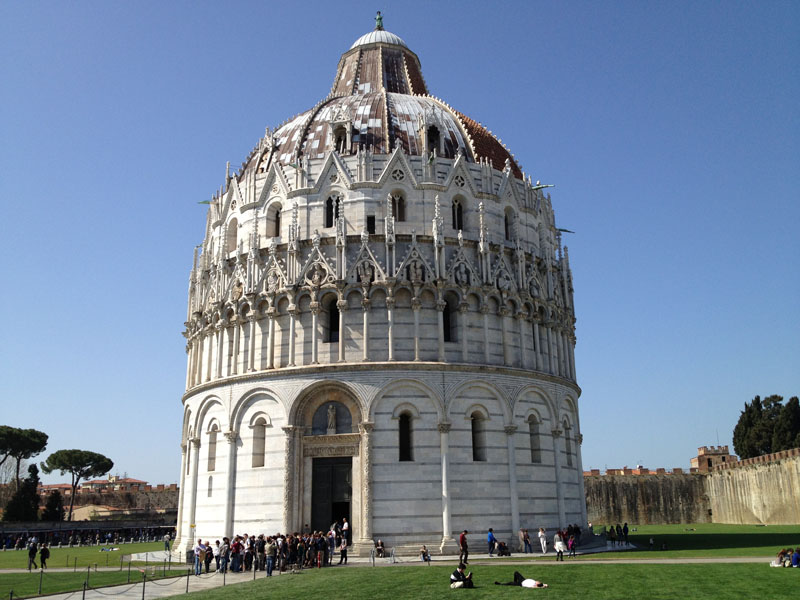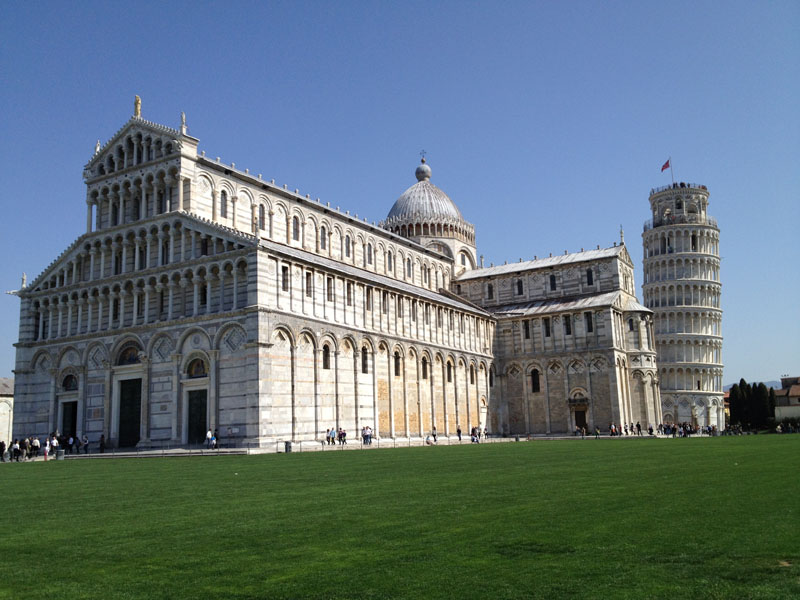In the wide square known as Piazza del Duomo known as the Cathedral Square or Piazza dei Miracoli, the Duomo or Cathedral of St. Ranieri, Pisa, Italy is an impressive structure in Romanesque architectural style. People come from all over the world to admire the building as well as to see another building in the square, the famous Leaning Tower or bell tower. Admiring the architecture, visitors enter the cathedral for veneration and worship as well as for studying the design and history of the stunning piazza and Pisa.
The cathedral is laid out in the shape of the cross with the dome on the eastern end. While the structure is definitely built in the Romanesque style, hints of influence from the Bysantines show in the details of arches with points and interior mosaics. One of the most impressive mosaics that remained after the devastating Duomo fire of the late 1500s was “Christ in Majesty.” The ceiling is gilt and much of the beautiful interior was redecorated and filled with new art after the fire.
 Also of interest is the use of marble in white and various other colors on the exterior and interior. The floors are quite elaborate and lovely. Because of the use of the light colored marble, the play of sunlight on the exterior changes breathtakingly as the sun travels across the sky.
Also of interest is the use of marble in white and various other colors on the exterior and interior. The floors are quite elaborate and lovely. Because of the use of the light colored marble, the play of sunlight on the exterior changes breathtakingly as the sun travels across the sky.
Saint Ranieri is the patron saint of Pisa. He was born and lived much of his life in Pisa during the mid-1100s. He lived a spiritual life like a saint with only a little variance in when he was very young. Upon his death, Ranierius Scacceri was entombed in the cathedral that was in the process of construction in Piazza del Duomo in Piza where his casket was made into an elaborate shrine at the altar in the mid-1600s.
To visit and explore, the Cathedral is spectacular. The small entrance fee is definitely worthwhile. Inside is a museum and throughout the building are tombs of well-known people, amazing artwork and historic relics. This cathedral in this square in Pisa, Italy is one of the most beautiful churches on the planet.









